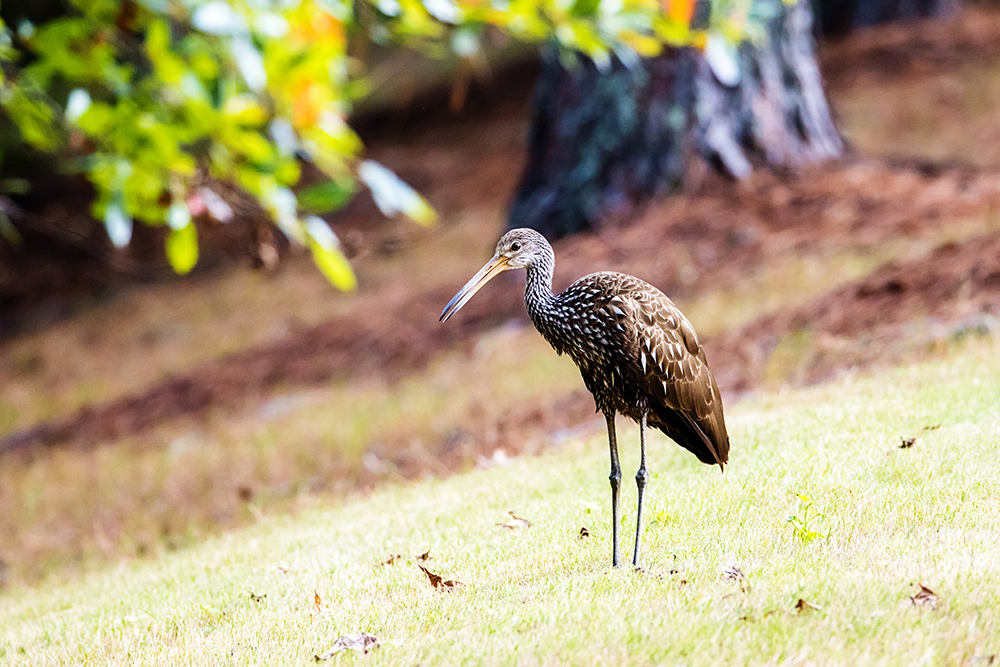NatureZen: Not From Around Here, Are You?
words and photos by Melissa McMasters
Until this month, my experience with flamingos was limited to lawn ornaments and residents of zoos and aviaries. I wasn’t sure I’d ever see an American flamingo in the wild. Though they turn up in South Florida every now and then, only 1% of the global American flamingo population lives in Florida. That’s because they were hunted to near-extinction for feathers and food by 1900.
Enter Hurricane Idalia.
Over the past month, birders in 16 states (and counting!) have had the awe-inspiring experience of seeing wild American flamingos at their local ponds, beaches, and farms. The hurricane seems to have swept up hundreds of birds living in the Yucatán peninsula, and when the winds died down, the birds paused wherever they could find food and water. In Tennessee’s case, that was in a tiny pond on a farm in Wayne County, where it mingled with sandpipers, cattle egrets, and yes, cows.
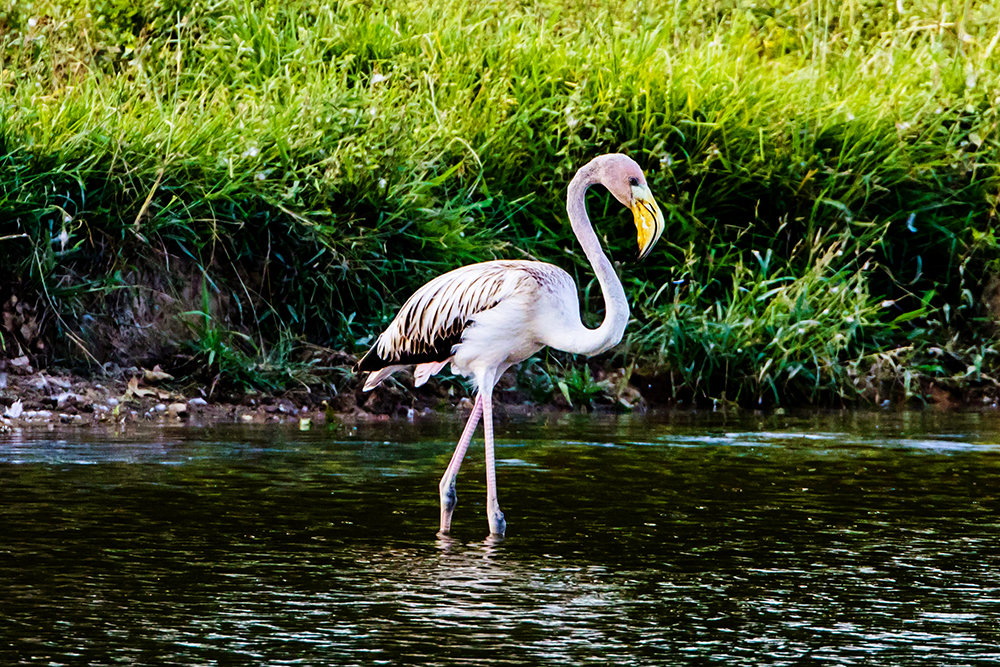
This bird arrived on a Friday night with two adults and two other juveniles, all of whom flew north the next morning. But this one hung around for another ten days or so before heading off, hopefully winging its way back to a place that’s hospitable to spend the winter.
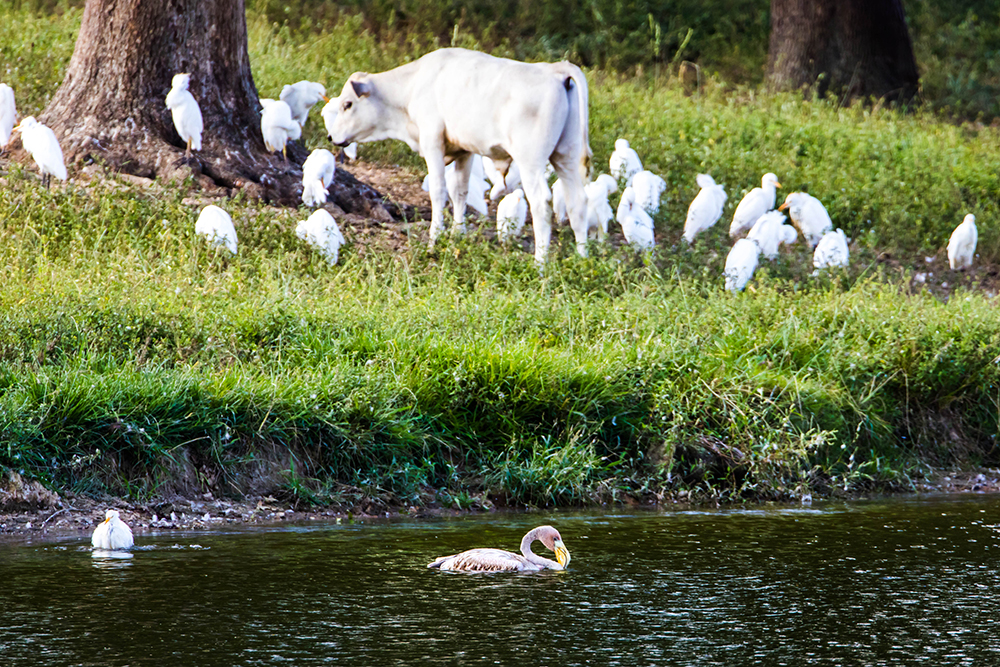
Seeing this majestic bird would have been an incredible experience anywhere it happened, but there was something magical about watching it so entirely out of context. I had driven two and a half hours east in the hopes that it would stick around, but I was prepared for disappointment. Birds can fly at any time, after all. Instead I found a small crowd of fellow observers, some of them overcome with emotion. We marveled together for a while, and then they all left to get out of the heat. I got to spend half an hour alone watching this ridiculously beaked, just faintly rosy creature fishing, swishing its tail, preening, stretching its endless legs, and taking a bath. I was still shaking with joy when I got back into my oven-like car.
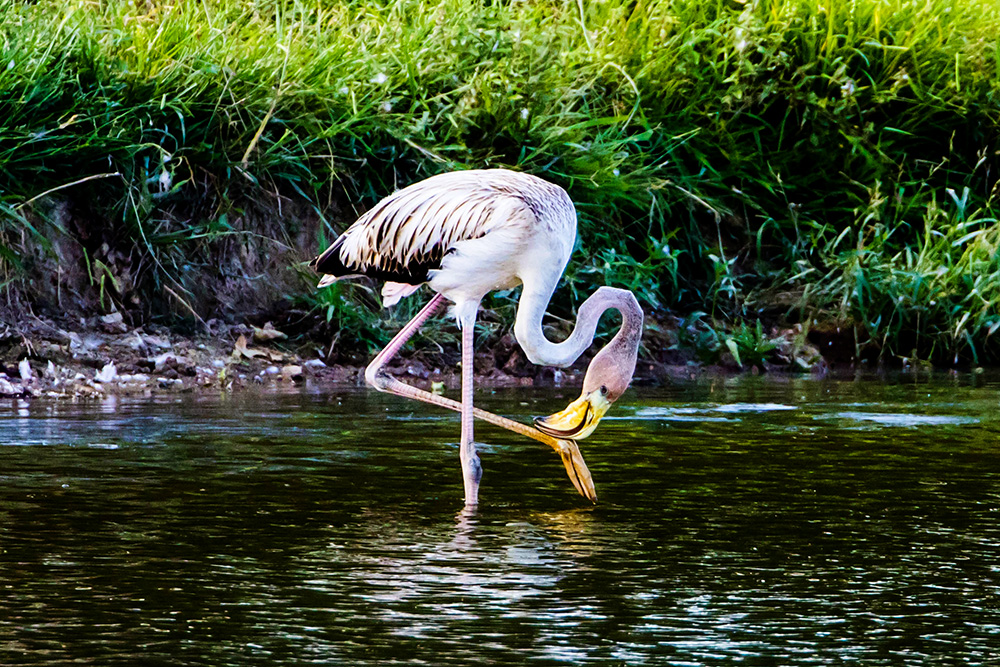
The flamingos dotting the country right now are known as vagrants, or animals that wind up far outside their normal breeding or migratory range. Lots of folks, seeing flamingos in places as far-flung as Pennsylvania and Wisconsin, have asked whether we should be catching them and ferrying them back home. This isn’t typically done because of the tremendous stress it would put on the birds. Luckily for flamingos, they’re strong fliers, and their journey back would largely be over land where there are many places to stop, rest, and find food and water. Many of them have a good chance at eventually making it home for the winter. The other major recent hurricane-bird story, in which Hurricane Lee blew many migrating American songbirds into the UK, will almost surely have a sadder ending. Our warblers and vireos are small and can’t store enough fat to make it back across the ocean, where there’s nowhere to stop and refuel. For birders, the thrill of vagrants is often tinged with the knowledge that these birds are shining brightly for only a brief time.
But why do so many birds wind up off course? Sometimes, as with the flamingos, the cause is obviously weather-related. But many instances of vagrancy can’t be definitively explained. My first time chasing a vagrant was in 2017, when a small Western songbird called a Say’s phoebe was reported on a fish farm in Milan, TN. It was a balmy Thanksgiving weekend and I had no plans for Black Friday, so driving a couple of hours to try my luck seemed like as pleasant a way to spend the day as any. These birds, cousins of the Eastern phoebes that live here, often build their nests on human-made structures in their breeding grounds out west. So while it might have been surprising to see one in Tennessee, its choice to hang out on a farm was just its way of making itself comfortable. Indeed, it was often seen perched on the equipment, though I eventually caught it on some more picturesque grass.
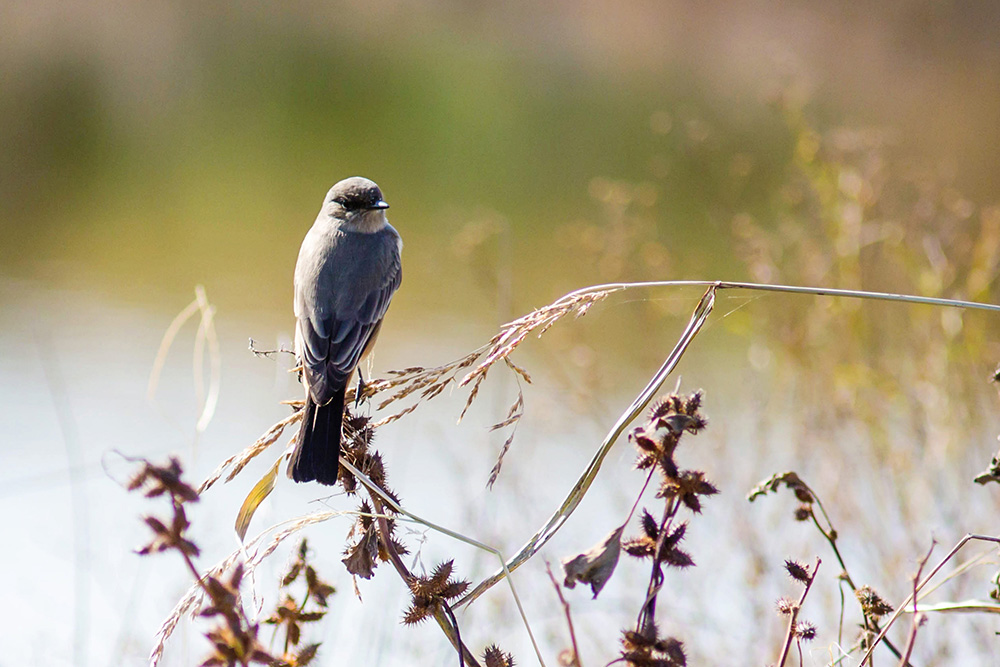
Vagrants are seen much more often during migration, when lots of birds are on the move, than during the breeding season. And many of these lost birds are juveniles, who may not have fully memorized the routes. Last fall, a buff-breasted sandpiper wandered into the small grassland area just west of Shelby Farms Park, where it spent a few days foraging in almost perfect camouflage among some mulch. These wee birds usually migrate through the central spine of the U.S., stopping in dry fields to look for insects. This one was a few states east of the norm, which is how I now know that you could fit one in a reasonably capacious shirt pocket.
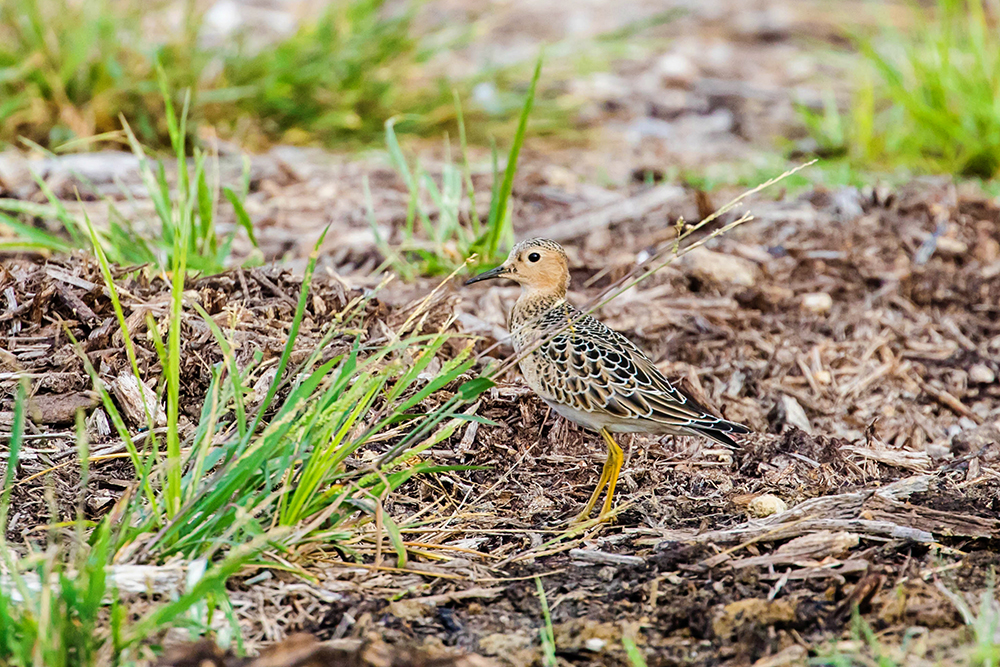
Only a few weeks after seeing this bird, I ran across another vagrant at the same location: an ash-throated flycatcher. These are desert breeders, but they’ve shown up often enough in the Eastern U.S. that a team of researchers from the University of Oxford and City University of New York – College of Staten Island decided to look into possible causes. They found that the best predictor of this species’ vagrancy was how successful the breeding populations (mostly in Arizona) had been that summer. Favorable wind conditions seemed to play a small role, but the main conclusion was that the more birds that fledged in the west, the more that were reported in the east in the fall.
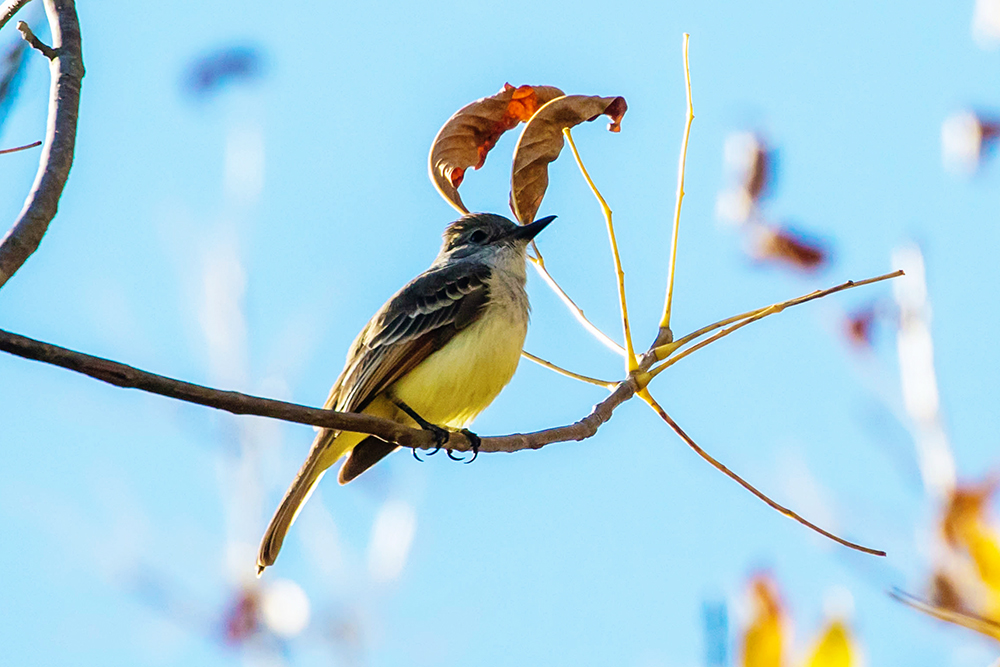
This bird was only reported once, but other vagrants stick around for a few days, to the delight of nearby birders. This winter Shelby Farms Park had a multi-day visit from some Harris’s sparrows, large and handsome birds that mainly stay west of Arkansas.
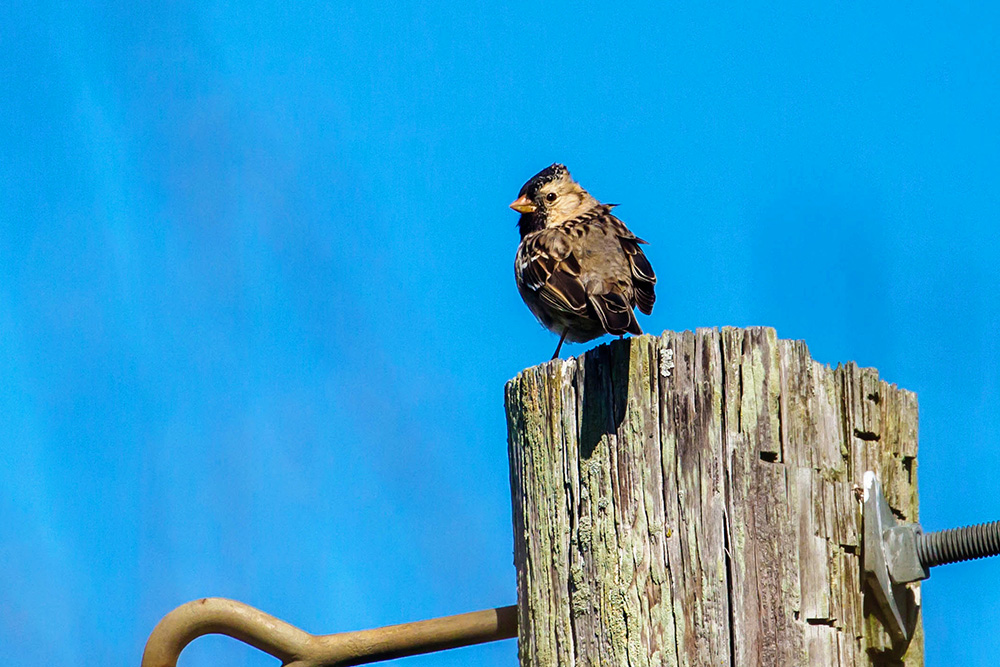
Others set up shop for a few weeks in hospitable habitat along their migration journeys. This common loon spent two weeks on Hyde Lake at Shelby Farms Park in March. (There’s a regular wintering population in middle Tennessee, including Percy Priest Lake outside of Nashville, but it’s still newsworthy when they grace us with their presence here.)
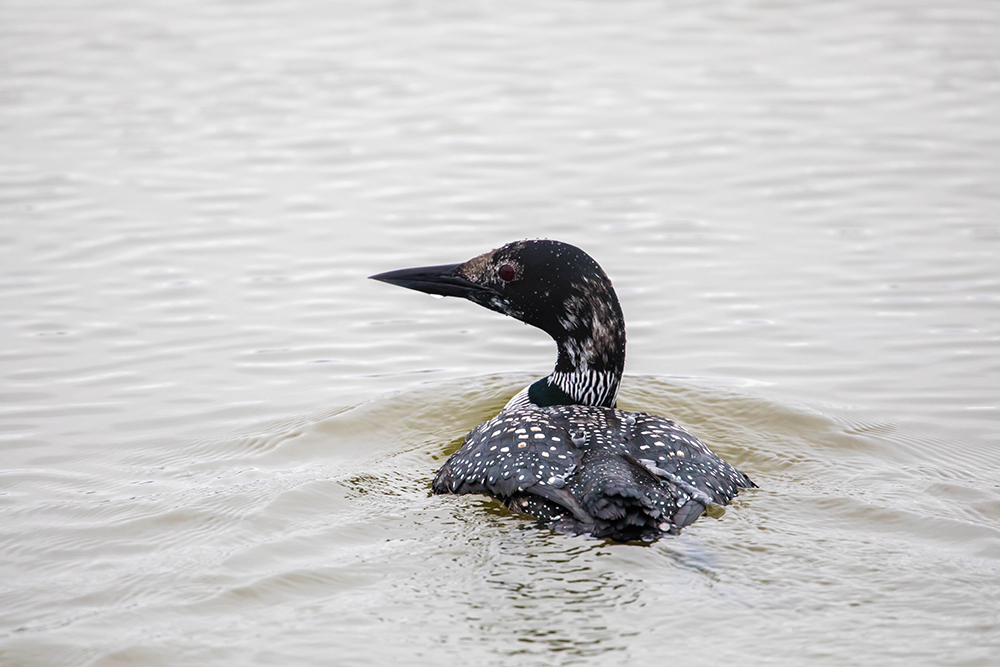
Other vagrants may be casting about for new places to breed. These pioneers are driven to expand their range by factors as diverse as climate change, habitat loss due to human development, or successful breeding causing too much competition in their home ranges. In some cases, those species once bred in a location, were driven out by one of these factors, and are returning. Anhingas, striking birds with snakelike necks, had a strong nesting presence on Reelfoot Lake a century ago, but the population has dwindled since then. Now, an occasional small group of anhingas is sighted in West Tennessee, and there may even be a breeding population in our area. This one was found (sensing a theme?) at Shelby Farms Park.
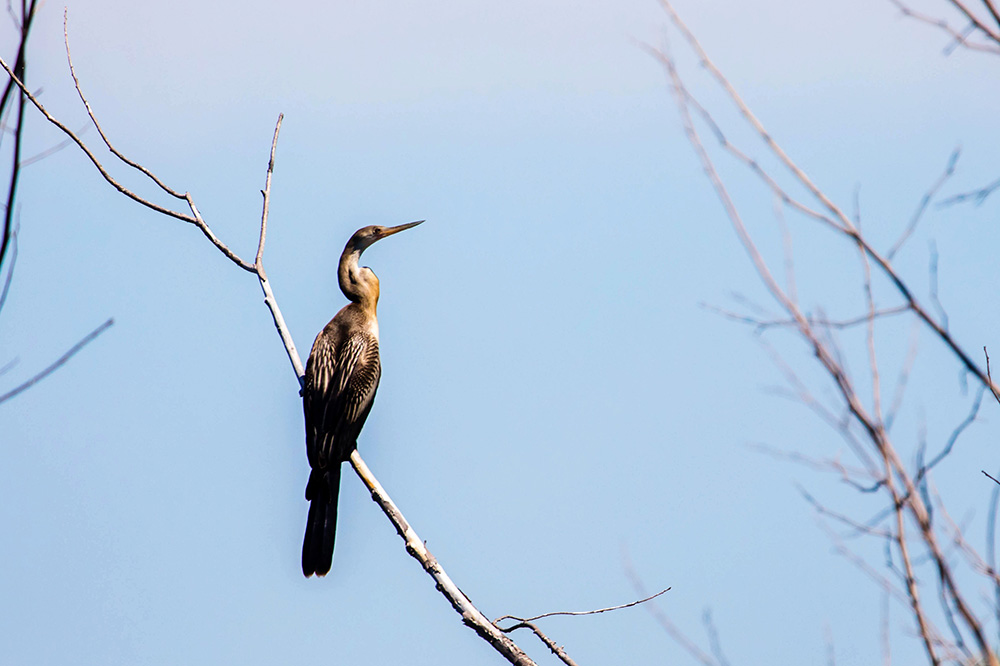
A much less conspicuous bird that’s trying to make the transition from vagrant to breeder locally is the Bell’s vireo. For the past four summers, this bird with a plain appearance but a killer song has been spotted around the Agricenter’s solar farm. The numbers have increased since that first summer, suggesting at least some of these birds have bred successfully. Sadly, this pair had their nest parasitized by a cowbird. Hopefully they’ll continue trying in a less cowbird-y location!
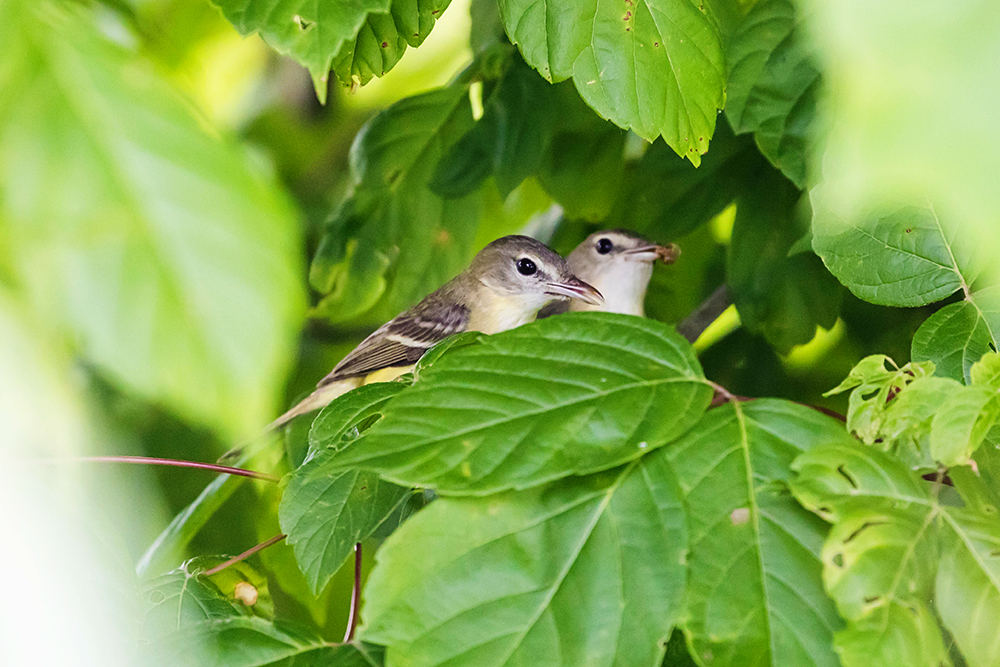
Finally, a species that birders have been watching closely over the past few years is the limpkin, a wetland bird that mainly lives in South America but can also be found in Florida. Limpkins have been turning up all over the Eastern U.S. recently, despite their preferred food (a native apple snail) only occurring in Florida. They’ve been showing up in the summer, prior to hurricane season, so weather doesn’t provide an explanation. There are enough of them, across a wide enough range, that isolated juveniles with faulty navigation systems aren’t to blame.
Instead, scientists are pointing to the explosion in populations of invasive apple snails, which are outcompeting the natives and venturing much further north than their Floridian counterparts. Limpkins are showing up in places where these snails have been recorded. How they know to look for them, and whether they’ll be any help in cancelling out the snails’ harmful effects on ecosystems, are questions I’d love to explore further. But for now, we’ll continue to keep our eyes open, record our sightings on eBird and iNaturalist, and experience the wonder of birds in and and out of context. You know, like a tropical wading bird hanging out behind an apartment complex in Collierville, leaving a trail of mollusk shells in its wake.
Check out our calendar of NatureZen Month events this October!

